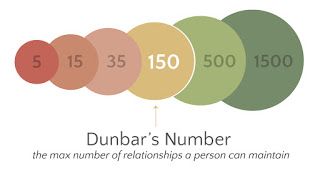As the school year launches for students across the nation, questions from passionate and innovative educators come into my networks on how to effectively support student learning. One common thread comes from innovative educators who have several classes of students and are trying to figure out how to manage all the demands placed upon them. They know that learning is not effective if you don't get to know your students. Or, as Jeff Bliss reminded us a few years back, you need to touch a student’s freakin heart before you can reach their minds.
There are definitely ways technology can help with this. For example, Thrively is a terrific tool for getting to know what students care about and how they thrive. Google Classroom is becoming very popular for tracking student assignments. But it's more than the data. It's all about relationships as students reminded us in an Education Nation panel where they shared advice like:
- I can't learn from you if you are not willing to connect with me.
- Caring about each student is more important than teaching the class.
- Every young person has a dream. Your job is to help bring us closer to our dreams.
- We need more than teachers. We need life coaches.
- You should be trained not just in teaching but also in counseling.
- Tell me something good that I'm doing so that I can keep growing in that.
- When you can feel like a family member it helps so much.
- You need to love a student before you can teach a student.
- Our teachers have too many students to enable them to connect with us in they way we need them to.
Angela Maiers agrees. She works with educators around the world to help them liberate genius in their students, has this advice for teachers: “If you don’t first secure students’ hearts, you don’t have a shot at their brains.”
She has three concrete suggestions for doing that:
- Greet every student by name as they enter the class, and then remark on something about several students in the first two minutes of class.
- Commend at least five students in each class period for their contributions to the discussion.
- Take two minutes at the end of each class to reflect on what everyone learned today.
However, Maiers laments that she often encounters teachers who “don’t have time” for such frivolity, or proclaim that it’s “not their job” to be “friends” with the students.
When it comes to secondary school or teachers of subjects like technology where they see many classes, it is quite possible teachers respond this way with good reason. They literally “don’t have time” or the mental capacity to do so. They are set up for failure.

That’s because it is not uncommon for teachers to have a schedule of 15 - 25 different classes a week. This translates to anywhere from 450 - 750 students.
We know from science that the number of individuals with whom a stable inter-personal relationship can be maintained caps at around 150. This limit is a direct function of relative neocortex size. This is according to anthropologist and psychologist Robin Dunbar, whose work refers to the average social group size.
Dunbar’s number is applied to several other areas such as number of relationships you can manage on social media vs number of “friends.” It also stands to reason that this number could be applied to how many students an educator could manage relationships with as well. With a load of more than 150 students, it simply becomes too complicated to manage at an optimal processing level.
When applying Dunbar's number to teaching that number drops. There is a cognitive limit to the number of students a teacher can maintain and have a consistent interaction with before the edges start to fray and these lose track of students. Once you pass that number, as one student put it, what you'll see is "the teachers focus on the top two or three who they can use to show themselves off and the bottom five who they have to keep in line or else chaos ensues."
The answer for Dave who wrote about this on AcademHack, is that 45 - 60 is the number of students teachers can realistically get to know very well.
Sure, teachers can use various strategies and harness the power of technology to try to keep track of more students, but it is difficult at best. When we know it is absolutely not necessary or in the best interest of students to give an educator more than 5 classes or 150 students the question becomes: Why do they?
Such large student loads is not a necessary evil and should not be business as usual. There are better ways to do scheduling that respect students, teachers, and the importance of knowing the whole child to reach them effectively.
The solution
If we want students and teachers to succeed, increase the time students spend with their teachers and limit the load. It’s a simple solution where everyone wins.
This is not a secret. We see it in independent schools and there are excellent public school models such as Big Picture Learning who put this idea into action with powerful results. Not only do they have one of the highest attendance rates, but there is also a 98% college acceptance rate.
What's your number?
How many students can you "really" reach? 45? 60? 150? More? Use this article to start important discussions where you work if you have a large class load. When you do, be prepared to suggest rethinking this practice with practical solutions and models that more effectively support student success and teacher effectiveness. Not sure how to do that? Read this article with 8 strategies to get your principal to say yes.
Lisa Nielsen writes for and speaks to audiences across the globe about learning innovatively and is frequently covered by local and national media for her views on “Passion (not data) Driven Learning,” "Thinking Outside the Ban" to harness the power of technology for learning, and using the power of social media to provide a voice to educators and students. Ms. Nielsen has worked for more than a decade in various capacities to support learning in real and innovative ways that will prepare students for success. In addition to her award-winning blog, The Innovative Educator, Ms. Nielsen’s writing is featured in places such as Huffington Post, Tech & Learning, ISTE Connects, ASCD Wholechild, MindShift, Leading & Learning, The Unplugged Mom, and is the author the book Teaching Generation Text.
Disclaimer: The information shared here is strictly that of the author and does not reflect the opinions or endorsement of her employer.

